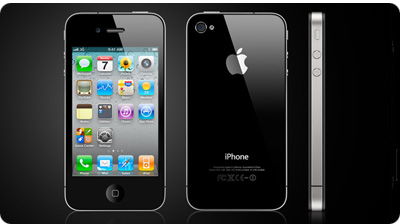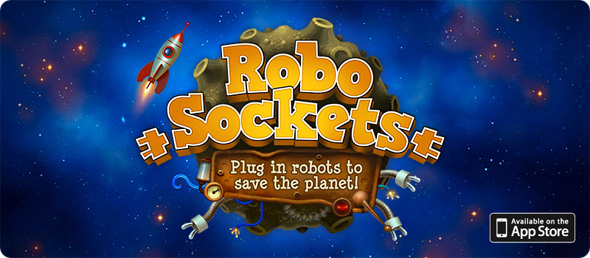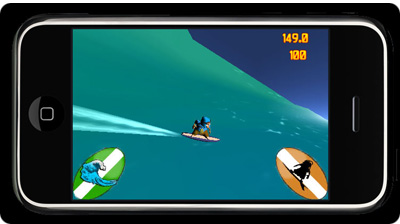7 Tips for iPhone Game Sound
Most aspiring producers envision the story of their career unfolding like Premier’s or Blaze’s. Working in the studio, recording emcees, banging out an accompaniment on an MPC. However, while the respect and prestige of an accomplished music production career is highly motivating, it can overshadow other profitable niches. On such niche is producing audio for games, and in particular iPhone games. There are several advantages to producing music for the iPhone, but it takes a some specialized knowledge. Here are seven tips from game sound designer Nathan Madsen to get you started.
1) Mix for the iPhone Speaker
The iPhone has one external speaker, which is on the bottom of the iPhone near the charging/syncing port. This means two things: First, all of your audio content is going to be heard in mono, and, second, out of a small speaker that cannot drive bass frequencies. So, when creating mixes for the iPhone, plan ahead for both circumstances. When monitoring your final result, see how it sounds with most of the lows highpassed out. Also, make sure you sum your final mix to mono to rule out any cancellation of frequencies that could potentially occur from combining right and left channels.
2)iPhone Audio File Size and Type
 The iPhone cannot stream multiple MP3 files at once. As a workaround, a streaming MP3 file is used for the iPhone game music (stereo 128k if the file size is small enough, mono if it needs to be smaller), while sound effects use WAV or CAF (CAF is a native Apple format used in most iPhone games.) Sound effects are usually down-sampled to 22kHz depending on the game’s graphics and other processing needs. The simpler the game, the more CPU power you have to work with and vice versa. When contracting out for an iPhone game always ask the client what the maximum file size is for the streaming music.
The iPhone cannot stream multiple MP3 files at once. As a workaround, a streaming MP3 file is used for the iPhone game music (stereo 128k if the file size is small enough, mono if it needs to be smaller), while sound effects use WAV or CAF (CAF is a native Apple format used in most iPhone games.) Sound effects are usually down-sampled to 22kHz depending on the game’s graphics and other processing needs. The simpler the game, the more CPU power you have to work with and vice versa. When contracting out for an iPhone game always ask the client what the maximum file size is for the streaming music.
If possible, try making alternative versions of the same song to give to the client. It could be as simple as muting several of the tracks, changing the instrumentation or performing a different solo. For a client that is open to a larger audio footprint this can really help keep the music within a certain size (per each individual file), while giving more variety and making the music less repetitive.
3) Remove Silent Bookends
MP3 formats insert silent bookends (blank space) that can ruin a seamless loop. Although the content loops flawlessy in your DAW, when bounced to MP3, there is now a break. There are several workarounds to this. First, you can compose your music in such a way where having that brief pause feels natural and organic to the music. For this method, avoid elements that play continuously at both the start and ending point (like a percussive element or long pad). Instead, have a short break in that constant element which helps cover the MP3 then have the music come back on beat. This can require some testing and nudging to get it to still feel metric and steady.
4)Test Content
Let’s say you’ve just finished an awesome track and you want to test how the mix is going to work on the iPhone before sending it off to the client. How can you test it? Very easily. First way would be to load it into a playlist on iTunes then sync your device to it. Voila! Now you can play it on the actual hardware and see how the mix works (or doesn’t work). If you don’t want to clutter up your iTunes playlist, just email the MP3 to yourself then open up the email via a 3G or Wi-Fi connection. Either way it’s easy, but it’s surprising how many people do not test their content on the actual device.

5) Combine Music and Atmosphere
On the last few iPhone projects I’ve worked on, I’ve combined the musical content with ambient sound effects. Then the game streams one file and the player gets the impression of a living world and musical background at the same time. Of course there are some cons to that method. The background ambience cannot be varied since it is embedded with the music track. If the client is okay with a larger game size then you could create alternative versions of the music and/or sound design and then toggle the playback between versions.
6) Always Work to Video when Doing Sound Design
Game clients often expect sound designers to work from a playable build of the game they need audio for. This isn’t enough. Always push for a video of the game play. If possible, have a video of individual elements, especially when supporting complex in-game events. Sometimes clients may push back saying that don’t have enough time or want to focus on something else. Just ask them if they want their sound effects to be a perfect fit to the game’s action, or just a rough estimate. This usually wins them over. At the very least, ask for longer video that shows many aspects of the game play then score your sound effects to that.
7)Stick to Simple Implementation
 From my experience, the iPhone’s audio engine isn’t as flexible as some of the current audio engines such as Fmod, Wwise and others. From what I’ve read and learned from teams I’ve worked with, the iPhone can do basic things such as change songs based on an event, randomize pitch and volume for repeated sound effect calls and do simple fade in and outs. The current phone isn’t going to be able to perform a good deal of live DSP (at least not at the level of the next gen consoles or PC) and it doesn’t use the MIDI-archive system so it cannot change instrumentation or tempo easily.
From my experience, the iPhone’s audio engine isn’t as flexible as some of the current audio engines such as Fmod, Wwise and others. From what I’ve read and learned from teams I’ve worked with, the iPhone can do basic things such as change songs based on an event, randomize pitch and volume for repeated sound effect calls and do simple fade in and outs. The current phone isn’t going to be able to perform a good deal of live DSP (at least not at the level of the next gen consoles or PC) and it doesn’t use the MIDI-archive system so it cannot change instrumentation or tempo easily.
Final Thoughts
I’ve found creating audio for the iPhone to be a very approachable task. Count your lucky stars, because other devices, like some other cell phones or the Nintendo DS, use a MIDI and archiving system that has many more ins and outs than the iPhone. Creating a looping MP3 is a much more feasible task. Another plus to iPhone game development is that the teams are usually smaller and much more open to cross-discipline work. In addition to creating the audio, you can have input on the game’s mechanics, visuals and plot. This is a great, new horizon on the game market. Get out there and have fun.
Nathan Madsen is an award winning composer-sound designer who has worked on over 140 projects in the video game, anime and indie film markets. On top of audio work, Nathan has written articles for various game audio books, hosted two video game composition competitions, taught college audio classes and taken part in a lecture series at Austin GDC. Learn more about game audio at www.gameaudio101.com







 GET 20% OFF COUPON INSTANTLY W/ SIGN-UP!
GET 20% OFF COUPON INSTANTLY W/ SIGN-UP!
 Check Out Hot Artists & Music Producers discovered through Song Submit!
Check Out Hot Artists & Music Producers discovered through Song Submit!



Nice tips! Game audio is something not many people think of !
We’ve been considering expanding into game audio as well. Great post.